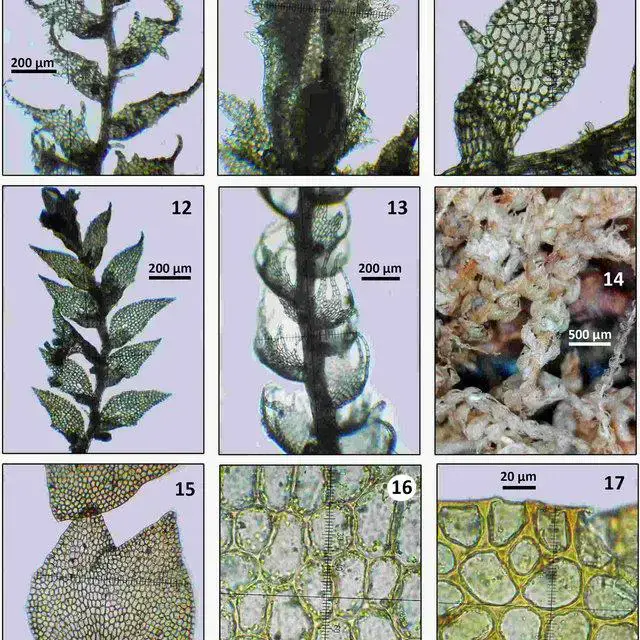
17-9-10-Drepanolejeunea-lichenicola-Spruce-Steph-from-Pocs-1610-AB-habit_Q640.jpg from: https://www.researchgate.net/figure/17-9-10-Drepanolejeunea-lichenicola-Spruce-Steph-from-Pocs-1610-AB-habit_fig2_360088764
Drepanolejeunea tosensis Steph.: A Tiny Moss with a Big Story
Introduction
When it comes to the world of mosses, Drepanolejeunea tosensis Steph.
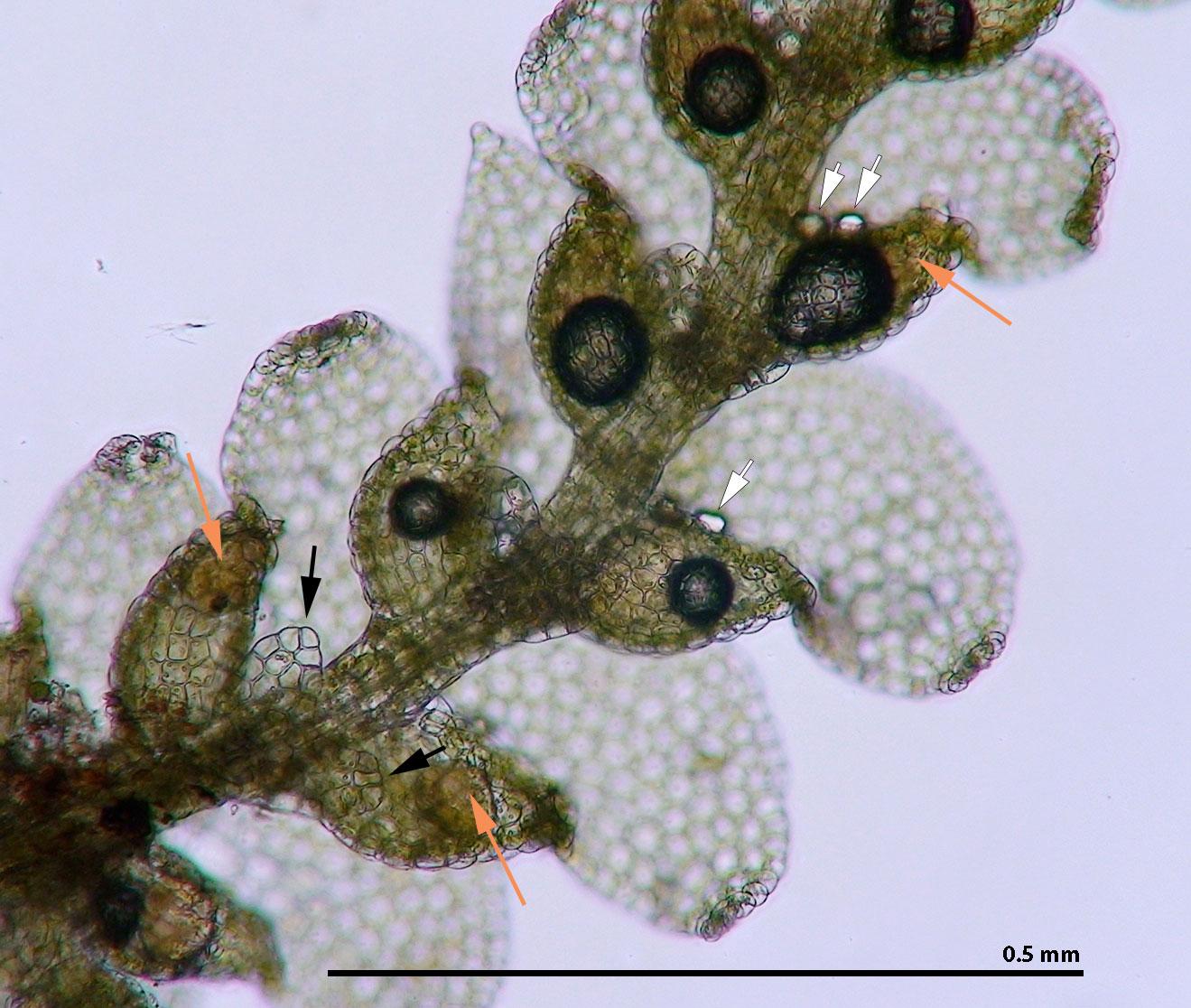
HarOva_pgd9679web5.jpg from: https://www.southernappalachianbryophytes.org/drepanolejeuneaappalachiana.html
may not be a household name. But this tiny moss, a member of the Lejeuneaceae family, has a fascinating story to tell. In this blog post, we’ll dive into the details of D. tosensis, from its unique morphology to its global distribution and ecological roles. Get ready to be amazed by this miniature marvel!
Background
Drepanolejeunea tosensis
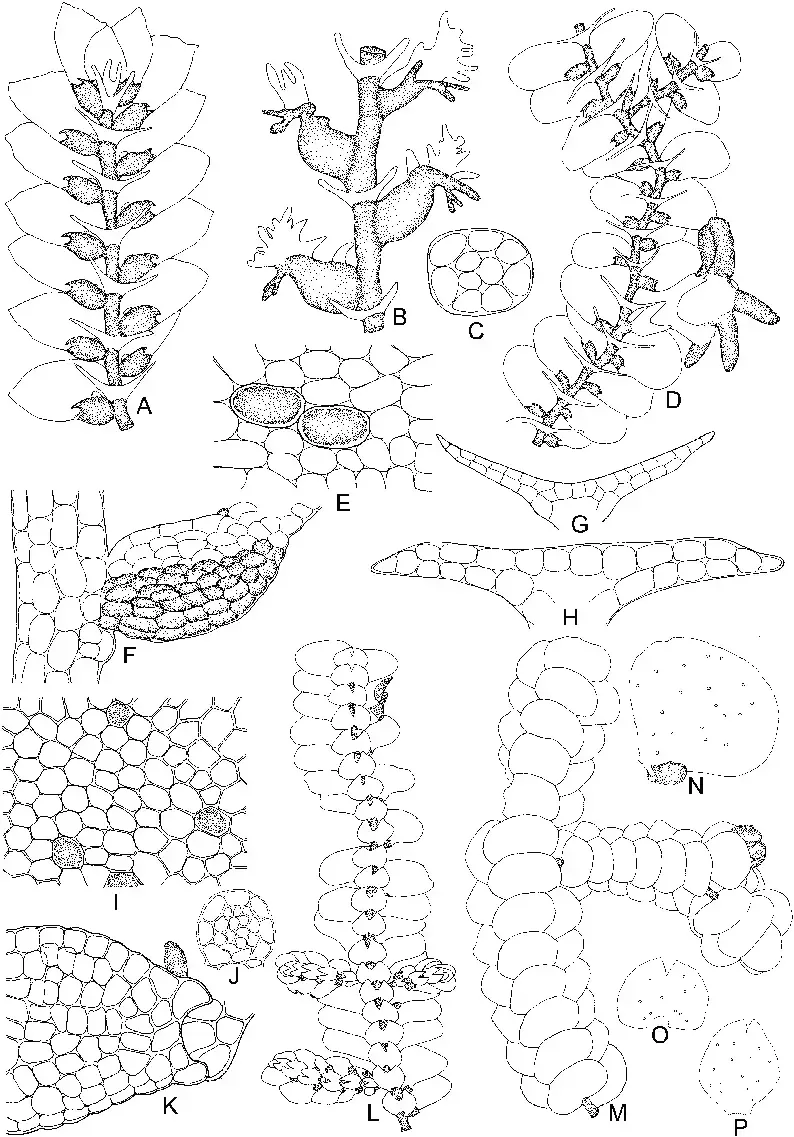
Drepanolejeunea-foliicola-Horik-A-Part-of-plant-ventral-view-G-Underleaf.png from: https://www.researchgate.net/figure/Drepanolejeunea-foliicola-Horik-A-Part-of-plant-ventral-view-G-Underleaf_fig47_357776052
is a species of moss in the Lejeuneaceae family, which is one of the largest families of leafy liverworts. The Lejeuneaceae are known for their small size and often grow as epiphytes on the leaves and bark of trees in tropical and subtropical regions worldwide. D. tosensis was first described by the botanist Franz Stephani in 1924 based on specimens collected in Tosa Province, Japan (now Kōchi Prefecture).
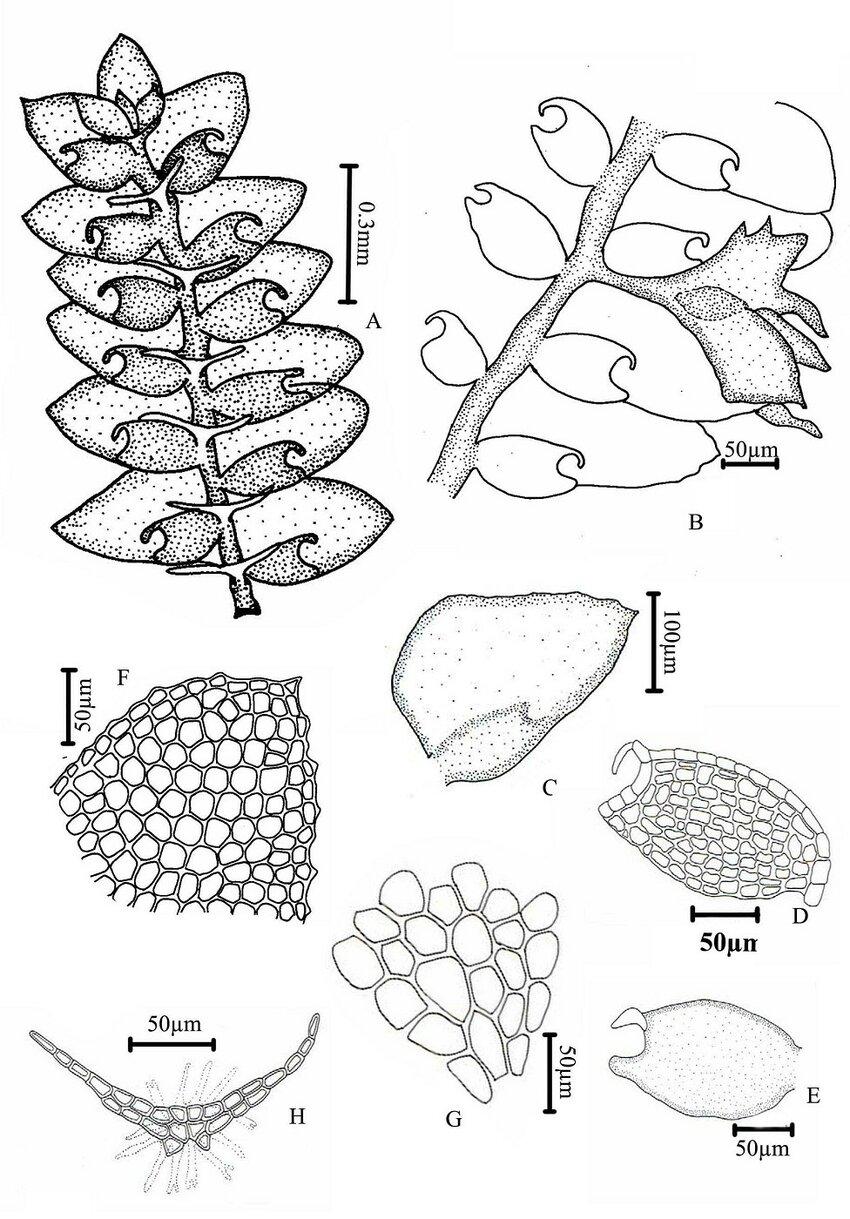
A-H-Drepanolejeunea-fleischeri-Steph-Grolle-R-L-Zhu-A-portion-of-plant.jpg from: https://www.researchgate.net/figure/A-H-Drepanolejeunea-fleischeri-Steph-Grolle-R-L-Zhu-A-portion-of-plant_fig7_343694914
Morphology and Identification
One of the most striking features of
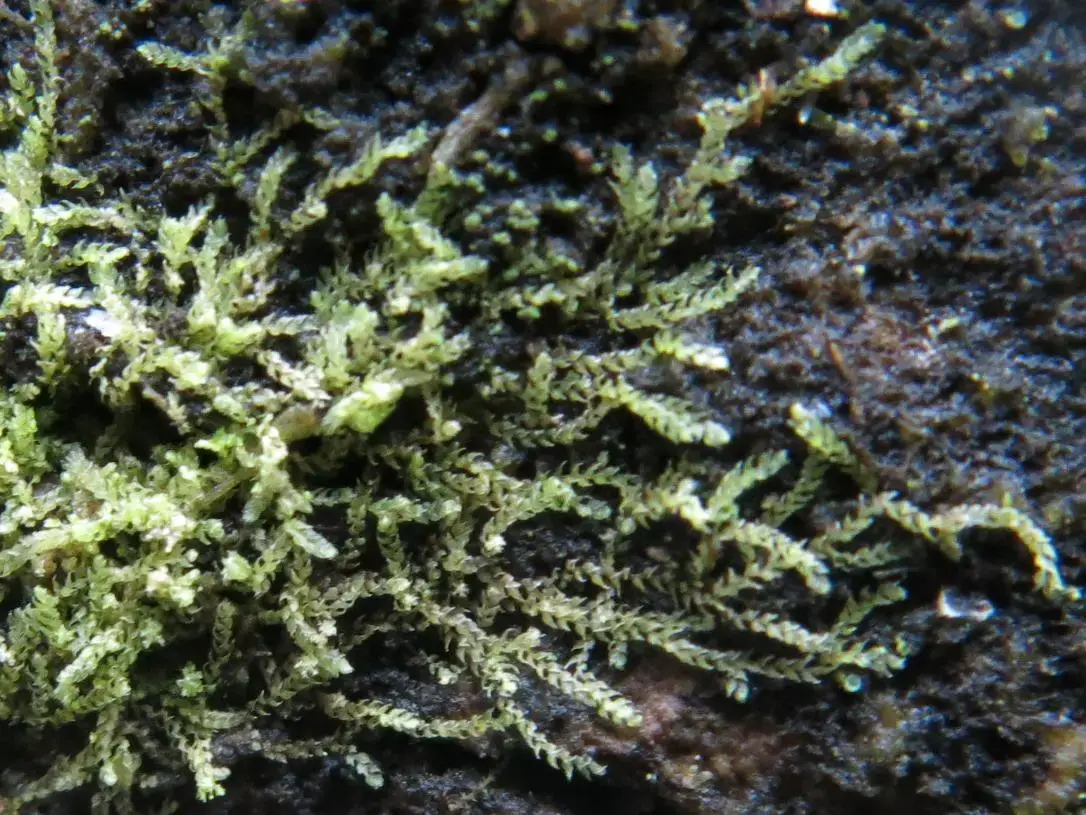
Drepanolejeunea%2Bclose%2BSgwd%2By%2BPannwr%2B20122016.JPG from: https://southwalesbryos.blogspot.com/2016/12/well-i-wasnt-expecting-that.html?m=0
D. tosensis is its tiny size. The shoots are usually less than 5 mm long and only 0.5-0.8 mm wide. The leaves are arranged in two rows and are sickle-shaped, hence the genus name “Drepanolejeunea” which means “sickle Lejeunea”. Each leaf has a small, inflated lobule at the base which helps the moss retain water.
Identifying D. tosensis requires careful examination under a microscope. The leaf cells have distinct trigones (thickenings at the cell corners) and the oil bodies are segmented. The underleaves are bifid (divided into two lobes) and the female bracts are toothed.
Global Distribution and Habitat
Drepanolejeunea tosensis has a wide distribution across Asia, Africa, and the Pacific. It has been recorded in Japan, China, Taiwan, Philippines, Indonesia, Papua New Guinea, Australia, New Caledonia, Fiji, Samoa, Vanuatu, Malaysia, Thailand, Vietnam, India, Sri Lanka, Reunion, Mauritius, Madagascar, Tanzania, and South Africa.
This tiny moss is found in a variety of habitats, including lowland and montane rainforests, cloud forests, and even coastal forests. It grows as an epiphyte on the leaves and twigs of trees and shrubs
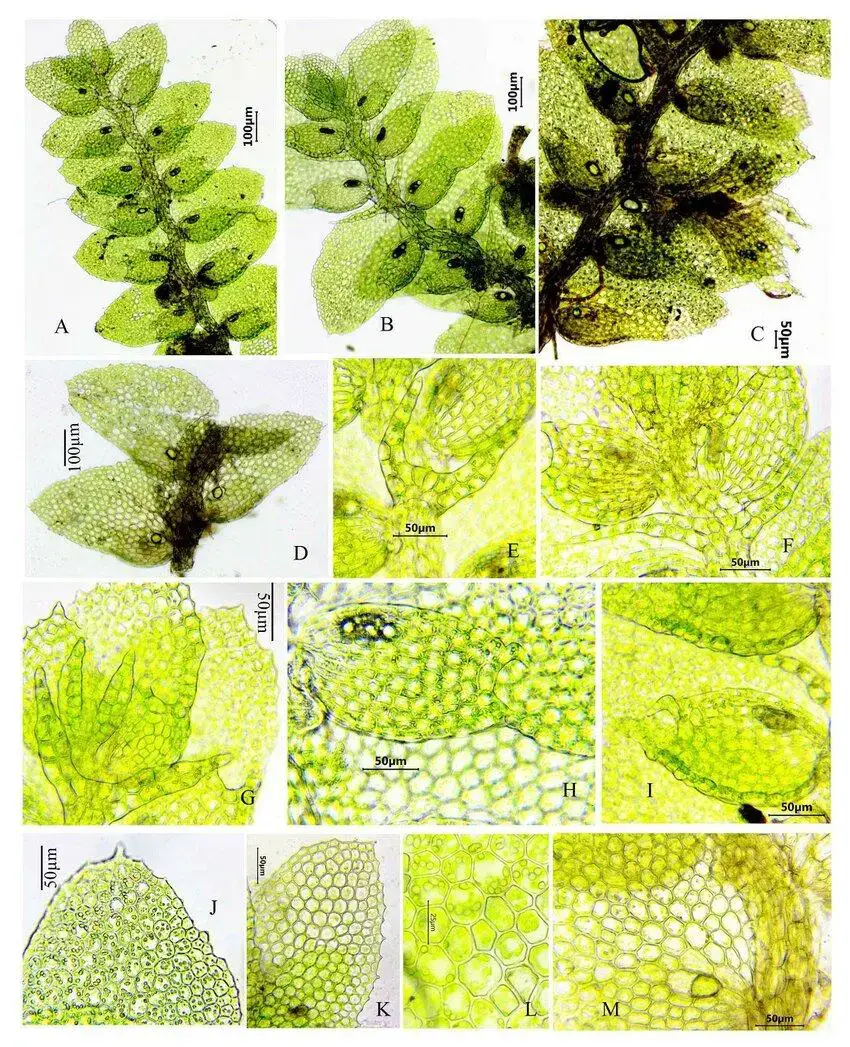
A-M-Drepanolejeunea-fleischeri-Steph-Grolle-R-L-Zhu-A-B-a-portion-of-plant.jpg from: https://www.researchgate.net/figure/A-M-Drepanolejeunea-fleischeri-Steph-Grolle-R-L-Zhu-A-B-a-portion-of-plant_fig6_343694914
, often in the understory or canopy layer. In some areas, it can also grow on rocks
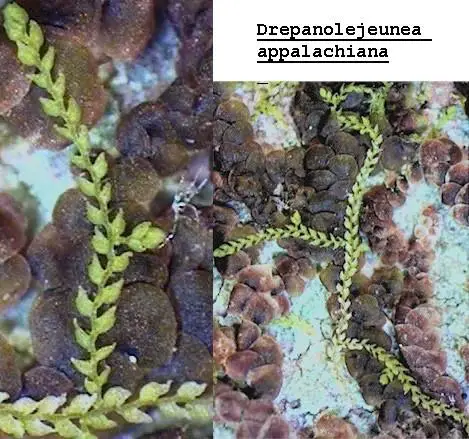
Drepanolejeunea_leaves_lg.jpg from: https://www.fs.usda.gov/wildflowers/plant-of-the-week/drepanolejeunea_appalachiana.shtml
or cliffs in sheltered, humid microhabitats.
Ecological Roles and Adaptations
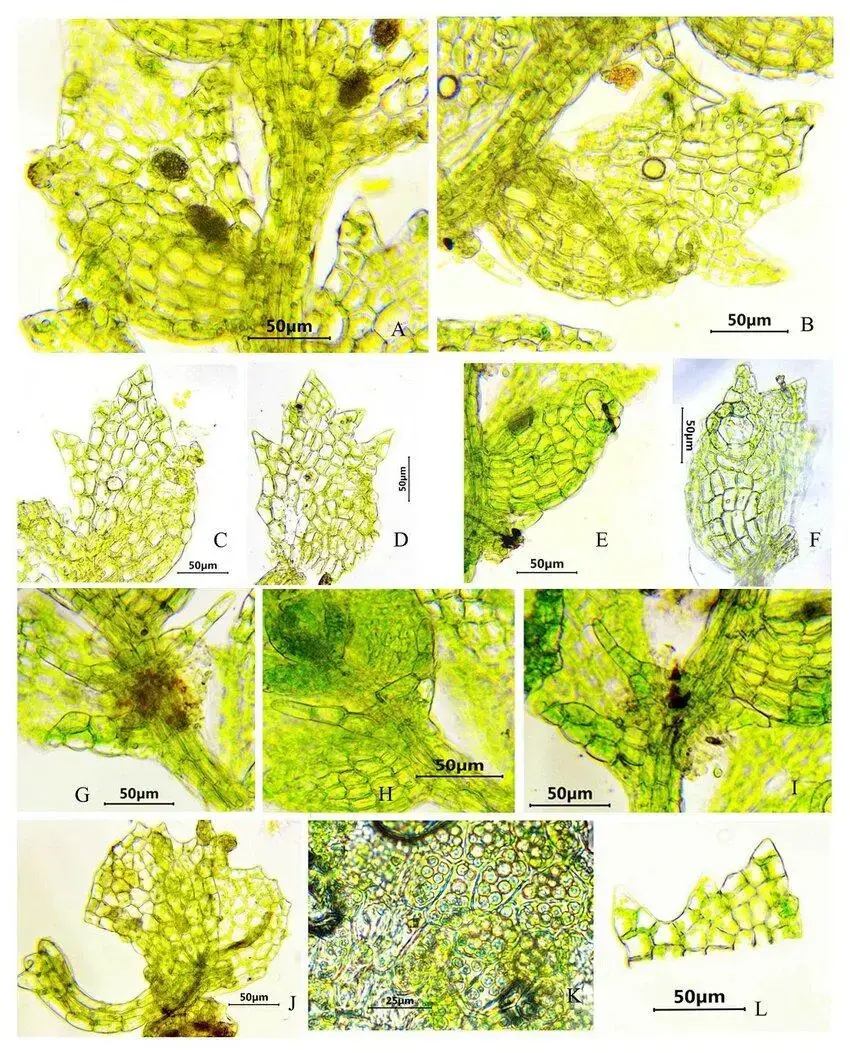
A-L-Drepanolejeunea-pentadactyla-Mont-Steph-A-leaf-with-ocelii-B-leaf-with.jpg from: https://www.researchgate.net/figure/A-L-Drepanolejeunea-pentadactyla-Mont-Steph-A-leaf-with-ocelii-B-leaf-with_fig8_343694914
Despite its small size, D. tosensis plays important ecological roles in the habitats where it occurs. As an
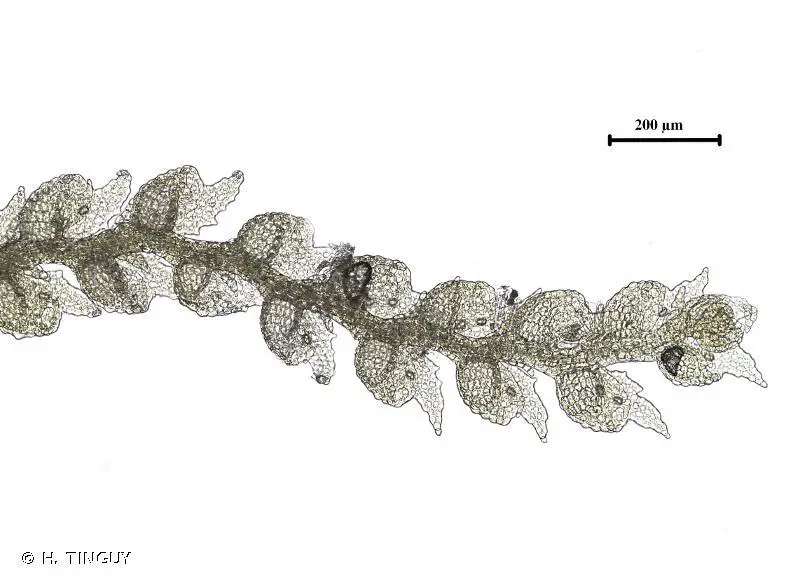
226289.jpg from: https://inpn.mnhn.fr/espece/cd_nom/6703
epiphyte
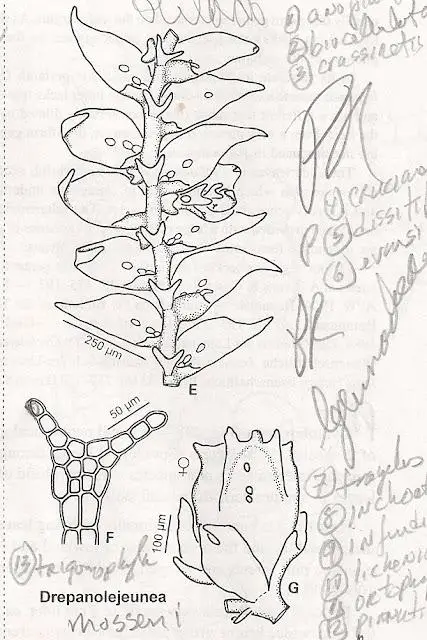
DREPANOLEJEUNEA%2BMOSSERRI.jpg from: https://plantasdepuertorico.blogspot.com/2017/03/hepaticas-lobadas-lejeunaceae.html
, it contributes to the diversity and biomass of canopy communities. It provides shelter and moisture for tiny invertebrates and other microorganisms.
D. tosensis has several adaptations that allow it to thrive in its epiphytic lifestyle:
- The sickle-shaped leaves help direct water and nutrients toward the stem
- The lobules at the leaf bases retain water like tiny cups
- The thick cell walls and segmented oil bodies help prevent desiccation
- The bifid underleaves and rhizoids help the moss cling to its substrate
Conclusion
Drepanolejeunea tosensis may be a tiny moss, but it has a big story to tell. From its unique morphology to its wide-ranging distribution and ecological roles, this little-known species is a fascinating example of the diversity and adaptations of epiphytic mosses. Next time you’re walking through a tropical forest, take a closer look at the leaves and twigs around you – you might just spot this miniature marvel!